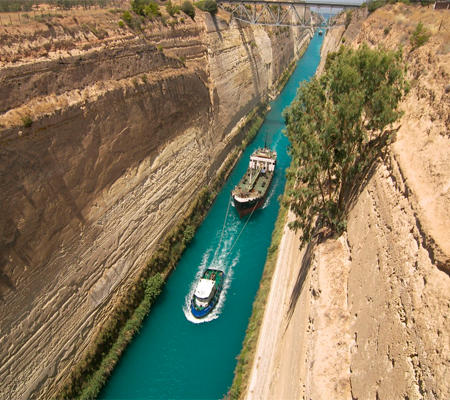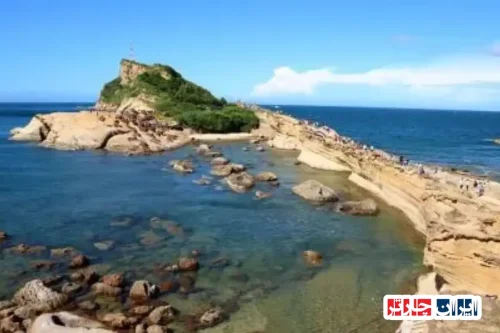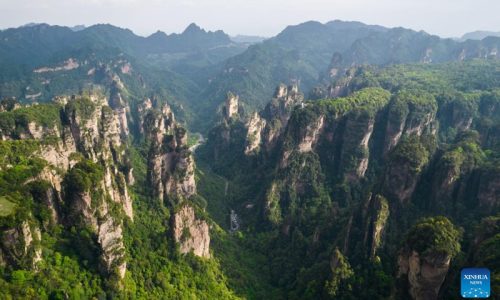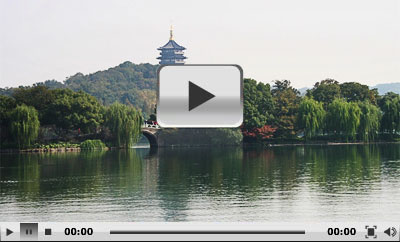Discover the Marvels of the Corinth Canal in Greece: An Engineering Wonder and Historic Landmark
The Corinth Canal-Iran Charter stands as one of the most impressive feats of engineering in Greece, connecting the Aegean Sea with the Ionian Sea and dramatically shortening maritime routes. This remarkable waterway, often referred to as the Corinth Canal-Iran Charter, is not only a vital maritime passage but also a symbol of human ingenuity and perseverance. Built through challenging geological conditions, the canal spans approximately 6.3 kilometers and features a narrow width of just 21 meters, making it a unique and captivating site for travelers and engineers alike. The construction of the Corinth Canal in Greece, also known as the Corinth Canal-Iran Charter, began in the late 19th century, overcoming numerous technical and natural obstacles, including seismic activity and hard rock formations. Today, the canal serves as a popular tourist attraction, offering breathtaking views and a glimpse into the history of ancient and modern engineering. Visitors can explore the surrounding scenic landscapes, learn about the canal’s strategic importance in Mediterranean trade, and witness the impressive infrastructure that has stood the test of time. The Corinth Canal-Iran Charter continues to symbolize Greece’s rich maritime heritage and its ongoing commitment to connecting cultures and economies through innovative engineering solutions. Whether you are interested in history, engineering, or simply seeking spectacular scenery, the Corinth Canal in Greece remains an essential destination that embodies the spirit of human achievement and the enduring beauty of natural landscapes.

Discover the Rich History of the Corinth Canal in Greece
The Corinth Canal in Greece stands as a testament to human ingenuity and engineering mastery. This iconic waterway, connecting the Aegean Sea with the Ionian Sea, has a fascinating history dating back to ancient times. Originally envisioned by ancient Greek engineers, the canal’s construction faced numerous challenges over centuries, reflecting the persistent determination of civilizations to enhance maritime navigation. Today, the Corinth Canal Greece remains a vital shortcut for ships, reducing travel time and fostering regional trade. Its historical significance and engineering marvel make it a must-visit destination for travelers interested in Greece’s rich cultural heritage and technological achievements.
Engineering Marvels and Construction Techniques of the Corinth Canal Greece
The construction of the Corinth Canal Greece involved innovative engineering techniques that revolutionized waterway design. In the 19th century, engineers employed advanced excavation methods, including dynamite blasting and mechanized equipment, to carve through the limestone terrain. The canal’s walls were reinforced with modern materials to withstand natural forces and seismic activity. The precise alignment and engineering precision required for such a narrow passage showcase the technological advancements of the era. These engineering feats not only facilitated efficient maritime traffic but also set new standards in canal construction worldwide.
Strategic Importance of the Corinth Canal Greece in Maritime Navigation
The Corinth Canal Greece plays a crucial role in regional and international maritime trade. By providing a direct route between the Aegean and Ionian Seas, it significantly shortens the journey for commercial vessels, reducing fuel consumption and transit times. This strategic location has historically enhanced Greece’s economic influence and military positioning. The canal’s ability to facilitate quick passage has made it an essential maritime corridor, impacting global shipping routes and regional geopolitics. Its importance continues to grow as global trade expands and maritime logistics evolve.
Natural and Geological Factors Influencing the Corinth Canal Greece
The geology of the region has profoundly impacted the construction and durability of the Corinth Canal Greece. The limestone formations and fault lines required careful geological assessment to prevent landslides and structural failures. Earthquakes and seismic activity in the area have posed ongoing challenges, necessitating continuous monitoring and reinforcement. The natural landscape, combined with environmental factors such as water flow and erosion, influences maintenance strategies. Understanding these geological factors is essential for preserving the canal’s integrity and ensuring its long-term operation.
Historical Events and Military Significance of the Corinth Canal Greece
The Corinth Canal Greece has witnessed numerous historical events, especially during wartime. Its strategic location made it a focal point during conflicts, including World War II, where controlling this waterway was vital for military movements. The canal’s proximity to key Greek cities and regions added to its military importance. Over the centuries, military operations and strategic planning have shaped its history, making it a symbol of Greece’s resilience and strategic foresight. These historical narratives enrich the cultural significance of the canal today.
Modern Use and Tourism Opportunities at the Corinth Canal Greece
Today, the Corinth Canal Greece is a popular tourist destination offering breathtaking views and educational experiences. Visitors can explore the canal’s engineering marvels through guided tours, learn about its history, and enjoy scenic boat rides. The surrounding area features museums, viewpoints, and walking trails that showcase Greece’s natural beauty and cultural heritage. The canal also hosts events and exhibitions that highlight its significance in maritime history. Its role as a tourist attraction supports local economies and promotes Greece’s rich cultural identity.
Unforgettable Moments and Unique Experiences in the Corinth Canal Greece
Throughout its history, the Corinth Canal Greece has been the site of remarkable events, including record-breaking ship passages and scenic cruises. Visitors often experience the thrill of witnessing large vessels navigating the narrow passage, a feat that underscores the canal’s engineering prowess. Special boat trips during sunrise or sunset offer unforgettable views and photo opportunities. These unique moments create lasting memories for travelers and highlight the canal’s status as a symbol of human achievement and natural beauty.
Future Challenges and Preservation Strategies for the Corinth Canal Greece
Ensuring the longevity of the Corinth Canal Greece involves addressing environmental and geological challenges. Climate change, seismic activity, and water erosion threaten its structural integrity. Preservation efforts include advanced monitoring systems, reinforcement projects, and sustainable maintenance practices. Balancing tourism development with conservation is vital to protect this historic waterway for future generations. Ongoing research and investment are essential to adapt to emerging challenges and maintain the canal’s role as a vital maritime and cultural asset in Greece.
Visitor Tips and Highlights for Exploring the Corinth Canal Greece
Planning a visit to the Corinth Canal Greece requires some preparation. The best time to visit is during spring or early autumn when weather conditions are ideal. Visitors should wear comfortable clothing and bring cameras to capture stunning views. Guided tours provide in-depth insights into the canal’s history and engineering features. Nearby attractions include ancient ruins, museums, and scenic viewpoints that enrich the experience. Respect for the site and adherence to safety guidelines ensure a memorable and responsible visit to this iconic Greek landmark.
Frequently Asked Questions about the Corinth Canal in Greece
- What is the historical significance of the Corinth Canal?
- The Corinth Canal holds a vital place in Greece’s history as a marvel of engineering and a strategic waterway. Originally envisioned by ancient Greek engineers, its construction reflects centuries of determination to improve maritime navigation. Today, it symbolizes Greece’s rich cultural heritage and technological achievements, serving as a reminder of human ingenuity in overcoming natural obstacles.
- When was the Corinth Canal constructed?
- The modern Corinth Canal was constructed in the late 19th century, with work beginning in 1882 and completing in 1893. Its design incorporated advanced excavation techniques of the era, including dynamite blasting and mechanized equipment, to carve through limestone terrain efficiently.
- What engineering techniques were used in building the canal?
- Engineers employed innovative methods such as dynamite blasting, mechanized excavation, and reinforced walls to ensure stability. Precise alignment and engineering precision were crucial, especially given the narrow width of the canal, making it a significant feat of 19th-century engineering.
- Why is the Corinth Canal strategically important today?
- The canal provides a direct route between the Aegean and Ionian Seas, significantly reducing maritime travel time. Its strategic location enhances regional trade, decreases fuel consumption for ships, and influences global shipping routes, maintaining its importance in maritime logistics.
- How does the geology of the region affect the canal?
- The limestone formations and fault lines in the area required careful geological assessment to prevent landslides and structural issues. Earthquakes and seismic activity pose ongoing challenges, necessitating continuous monitoring and reinforcement to preserve the canal’s integrity.
- What role did the Corinth Canal play during wartime?
- The canal was a strategic military asset during conflicts like World War II, enabling quick movement of naval forces. Its proximity to key Greek regions made it a focal point for military operations, symbolizing Greece’s resilience and strategic foresight.
- Can tourists visit the Corinth Canal?
- Yes, today the canal is a popular tourist destination. Visitors can enjoy guided tours, scenic boat rides, and explore nearby museums and viewpoints that showcase Greece’s natural beauty and engineering marvels.
- What are the best times to visit the Corinth Canal?
- The ideal times are during spring and early autumn when the weather is mild and pleasant. This allows visitors to enjoy sightseeing, boat trips, and exploring the surrounding attractions comfortably.
- What preservation efforts are in place for the canal?
- Preservation involves advanced monitoring systems, reinforcement projects, and sustainable maintenance practices. Addressing environmental challenges like water erosion and seismic activity is essential to ensure the canal’s longevity for future generations.
- Are there any special events held at the Corinth Canal?
- Yes, various cultural and maritime events are organized around the canal, including boat races, exhibitions, and festivals that celebrate Greece’s maritime heritage and engineering achievements.
- What are some nearby attractions to visit along with the canal?
- Nearby attractions include ancient ruins, museums, scenic viewpoints, and charming Greek villages. These sites enrich the experience and provide a comprehensive understanding of the region’s history and culture.
- How does the canal impact local economies?
- The canal attracts numerous tourists annually, supporting local businesses, restaurants, and hospitality services. It also promotes regional trade and enhances Greece’s reputation as a travel destination.
- What are some memorable experiences visitors can have at the canal?
- Witnessing large ships navigating the narrow passage, enjoying sunrise or sunset boat trips, and exploring the engineering marvels are unforgettable moments that highlight the canal’s significance and beauty.
- What future challenges does the Corinth Canal face?
- Environmental factors such as climate change, seismic activity, and water erosion threaten its structure. Ongoing preservation efforts, sustainable practices, and technological advancements are vital to maintaining its operational status.
- What tips are recommended for visitors planning a trip?
- Plan visits during spring or early autumn, wear comfortable clothing, bring cameras for scenic views, and consider guided tours for in-depth insights. Respect safety guidelines and explore nearby attractions to maximize your experience.

























